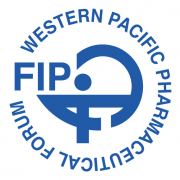Australian medical tech showcased in Korea
Australian medical tech showcased in Korea
The “Australian Innovation Showcase 2015 ― Medical Technologies” was held Monday to showcase the country’s advanced medical technologies and create business links between Korea and Australia.
The Australian Trade Commission Korea organized the event at Seoul Plaza Hotel, bringing together Australia’s medical technology researchers, manufacturing company representatives and Korean medical officials.
“Australia is a technologically advanced country with a strong entrepreneurial spirit. We have 11 Nobel Prizes in the sciences and medicine,” Australian Ambassador Bill Paterson said at the event.
“Today’s showcase provides an opportunity to identify long-term partnerships that can contribute to Korea’s creative economy.”
Na Heung-bok, a representative of the Korea Medical Devices Industry Association, said: “Korean medical associations look forward to cooperating in the medical device industry with Australia.”
Australia’s medical technology industry is a world leader in many fields, including diagnostics, imaging equipment and digital health applications, according to the ATC.
The Australian market for medical devices was ranked the second-most attractive in the Asia-Pacific this year, as well as eighth in the world for technological specialization and 13th for medical device patents.
In 2013-14, the country’s medical devices sector exported around A$1.7 billion ($1.3 billion) worth of products to 167 different countries.
Multinational health care corporations such as GE Health, Cook Medical, Medtronic and Baxter International operate manufacturing, research and development projects in Australia.
At the event, Dr. Paul Savage of the Commonwealth Scientific and Industrial Research Organization presented on the medical biomaterials, regenerative medicine, and drug delivery processes that CSIRO is studying in Australia.
“The focus of future biomedical materials research is in the development of combined materials, especially the use of polymer and stem cell combinations for tissue regeneration. The commercialization is expected to be realized in the near future,” he said.
Professor Gordon Wallace of the University of Wollongong presented on the commercialization of Australia’s medical research and the effect of 3-D bio-printing on medical science.
“Medical devices such as glaucoma implants, cartilage restoration scaffolds, and customized drug delivery have been realized through 3-D bio-printing,” according to Wallace.
“The 3-D printer has made basic stem cell research possible, while artificial tissue produced by 3-D printing could eventually replace animal testing. Three-D printing challenges how we think about fabrication and enables us to more closely integrate fundamental and applied biosciences.”
The achievements of past Australian medical breakthroughs was presented at the conference with special mentions for Cochlear’s bionic ear, Resmed’s continuous positive airway pressure for sleep apnea, the world’s first 3-D-printed titanium heel implant and adaptive diagnostic technology platforms.
A team at the University of Queensland has developed technology to make clearer images from MRI scanners that is now included in more than 65 percent of all manufactured MRI scanners.
Dynek’s Sutures are used in operation rooms in over 70 countries, and AtCor Medical’s cardiovascular diagnostic device, SphygmoCor, occupies a leading position in diagnosis and patient management.
By Joel Lee ([email protected])
Reference:http://www.koreaherald.com/view.php?ud=20150705000370

